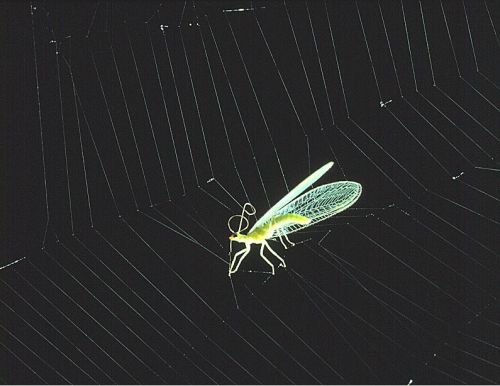Spider’s spun web to trap insects, which is known for its tensile strength and flexibility, easily stretching up-to five times their length without breaking. These webs, trap flying insects, pollen’s and other particulate matter present in the air. Traditionally it was believed that the flying insects are caught in this web. Interestingly, it is recently discovered that the spiders web are coated with a glue which makes the web electrically charged and so the web can actually leap towards any charged particles to grab it. The glue-coated web can even alter electric field of the earth for a few millimetres, possibly helping insects to locate the webs using their antennae.
The researchers found how a characteristic of physics make webs to spring towards any particles (be it positively or negatively charged) present in the air. This property makes the web highly efficient for trapping all types of particles floating in the air.
Electrically conductive web is not only benefiting the spiders, but to the scientists as well. Scientists assert that monitoring the filtered pollutants trapped in the webs of commonly found garden spider could provide useful information regarding the pollution level. The efficacy of this monitoring would be as good as that provided by using expensive sensors.
Researchers even identified certain airborne particles by just inspecting at the structure of the webs. Spiders often eat their own webs, along with any particles that are trapped like pollen, various chemicals. Spider web weaving quality alters, under the influence of different drugs. When on LSD spiders spun perfect webs and spun awful webs when given caffeine. Therefore, the web structures can indicate whether any chemicals seem to affect them.
Almost all the insects that fly can sense any disruption in the earth’s electric field, hence whether they can intentionally avoid getting trapped. However, the spider’s web generated disturbances are short ranged and so it cannot be told whether insects are capable enough the sense these minute disruption before the web reach out to trap them.
Researcher Fritz Vollrath said:
People often underestimate the static electricity that builds up in airborne objects, but it is important at all scales. The Hindenburg disaster might have been caused by a discharge of static electricity, and helicopters have been known to explode if they discharge suddenly when landing.
With this latest discovery, researchers are eager to observe spiders making use of this property to bait their prey. Further, by examining the matters trapped in their web will prove vital to draw an inference about pesticides, pollutants and the overall air quality.
Source: Science Daily




